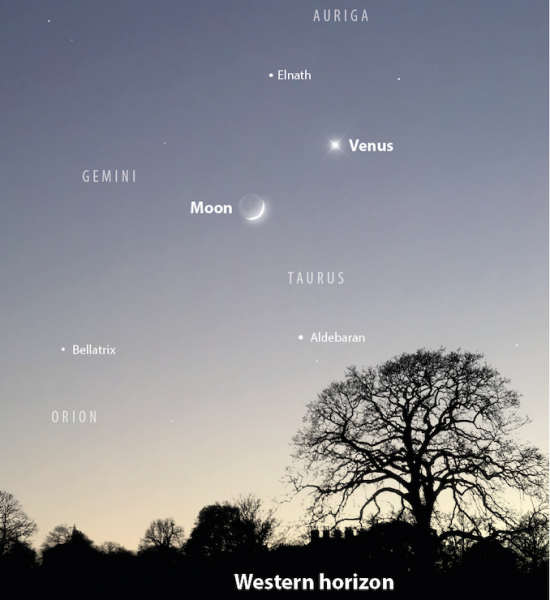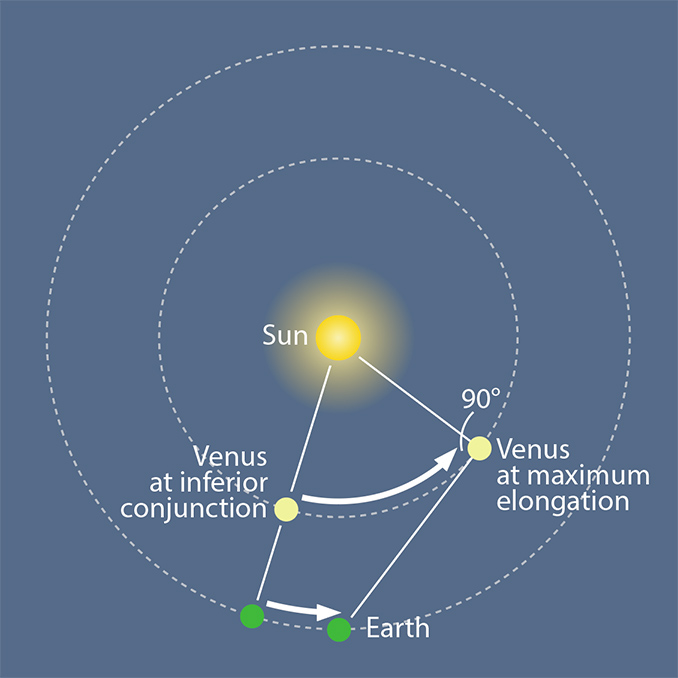Beginners’ astronomy: That bright light you can see in the western sky? That’s Venus – Astronomy Now Online
During the warm evenings and clear skies of recent weeks, you may have noticed a brilliant, shining beacon towards the west, far brighter than anything else in the night sky other than the Moon, and wondered what it was.
That bright ‘Evening Star’ is actually a planet, Venus, and from the Northern Hemisphere it will be visible in the evening sky all through the rest of April and into May. In fact, it will reach its absolute brightest on 28 April – yes, it will get even brighter than it already is, if only slightly!

So, why is it so bright? Is it because, like Mars or Jupiter when they are at their brightest, Venus is at its closest point to Earth? Well, not quite. At its closest, Venus comes within 42 million kilometres of our planet during what we call ‘inferior conjunction’, when it lies directly between us and the Sun. However, we can’t observe it during inferior conjunction, partly because of the Sun’s glare hiding it, and also because at inferior conjunction we are looking at Venus’ night-time hemisphere – the dayside is facing the Sun instead, so we would not see the illuminated part of the planet.
Instead, we see Venus at its brightest when it’s close to a point called ‘maximum elongation’. To picture what this is, imagine being able to look down on the Solar System from high above the plane of the orbits of the planets. With this birds’ eye view, you are able to see the planets traverse their (almost) circular orbits. Now, focus on the orbits of the second and third planets, Venus and Earth, and imagine Venus at inferior conjunction with Earth.
Because Venus is closer to the Sun, its orbit is smaller and it moves around the Sun faster than Earth does (one orbit for Venus takes 225 Earth days, as opposed to our 365 days). So soon enough it reaches a position in its orbit relative to Earth where it appears to the side of the Sun from our point of view. The further to the side of the Sun that Venus moves, the easier it is to see it. Its greatest distance to the side of the Sun is called maximum elongation, and as we can see, Venus is quite a distance from the Sun in the sky. For example, on 28 April, when Venus is about 70 million kilometres from Earth, it sets below the western horizon four hours after the Sun does.

During the time around maximum elongation, we don’t see all of Venus illuminated by the Sun, but only a portion of it. Indeed, if you turn a pair of binoculars (at minimum they would need to be 10 x 50 binoculars) or a telescope towards Venus during mid-April, you should see it with a crescent phase, much like the Moon, with only 37 per cent of its visible disc is illuminated by the Sun. By 28 April, as Venus continues on its orbit around the Sun and our viewing angle begins to change, this has reduced to 26 per cent.
Yet despite only a small percentage of the visible part of Venus being illuminated, it can still shine so brightly because its atmosphere is composed of thick clouds of carbon dioxide and sulphuric acid that completely enshroud Venus and which are incredibly reflective. Venus has an albedo of 0.7, which means that it reflects about 70 per cent of the sunlight that falls on it.
So, that’s why Venus is shining so brightly at the moment, and it makes for wonderful viewing in the evening sky. In particular, look out for the thin crescent of the Moon near Venus on the evening of 26 April – if you have a DSLR camera and a steady tripod, perhaps try shooting some pictures of the two close by?






